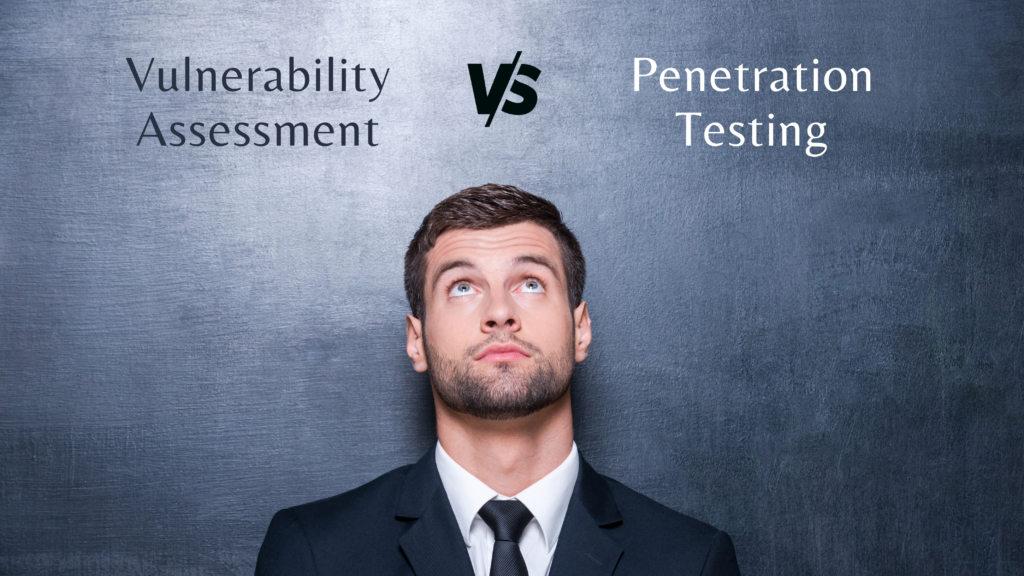
What is the Difference Between Vulnerability Scanning and Penetration Testing
Software testing and Quality control aim to provide users with secure applications, safe from any potential hacking scenario or accidental leaks. And to accomplish this, we rely on two security testing methods: Vulnerability scanning (VS) and Penetration testing (PT).
While both have a similar role in creating a stronger, more secure system by preventing any breaches/crashes that may occur in the future and threaten software security, there are specific differences that we need to investigate between the two.
The Q-Pros Software QA strategy sets out to consolidate the foundation of any system to produce a better swift and secure digital experience through various methods. This article will examine the major differences between Vulnerability scanning and Penetration testing.
First, let us start by defining each…
What is Vulnerability Scanning?
Vulnerability scanning can be defined as a thorough inspection of a software system or network to exploit potential security holes. Vulnerability scans identify weaknesses and would make way for effective countermeasures.
A vulnerability assessment would examine pre-existing security measures and suggest new ones based on vulnerability reports. These reports would conclude the effectiveness of firewalls, servers, web-based services, and any other area regarded for/with security.
Vulnerability assessment reports, or security assessments, would segregate the findings based on severity, prioritizing action on more severe vulnerability points. The three levels of severity are (High/Medium level/Low).
What is Penetration Testing?
Penetration testing, also known as ethical hacking is a simulation of a cyber-attack on a computer system to highlight the weak points and evaluate the overall security of the system.
Penetration testing examines vulnerabilities, and particular vulnerabilities might get discredited based on the PCI Security Standards Council (PCI SSC) after conducting penetration tests (colloquially known as pentests). Software companies must manage and organize their criteria to be aligned with security based on PCI SSC modules.
Ethical hackers prepare the system for future attacks through possible ways the system can be exploited, this in return prevents such scenarios from succussing or coming to fruition by actual hackers.
Vulnerability Assessment Vs Penetration Testing | What is the difference?

- Framework/Scope
One distinguishing factor between vulnerabilities and penetration tests is the framework. A vulnerability assessment would focus on multiple areas to discover and identify potential threats or risk factors that cause a system failure. On the other hand, Pentests focuses on one aspect and doubles down on it to reflect more on one scenario that could be exploited with some technical effort for users looking to take advantage (Hackers).
- Procedure
Pentests exploit and take advantage of what vulnerability assessments find. So, the sheer difference between the two is that one is more research-based (Vulnerability scanning), and the other is more action-based (Penetration testing).
- Method (Automated/Manual)
Another factor that differentiates between vulnerability scans and penetration tests is that vulnerability scans are mostly automated, while penetration tests certainly require manual interference.
- Outcomes
In terms of the expected outcome, we can be almost always sure that vulnerability scans will produce false positives, whereas manual penetration testers could likely ensure zero false positives.
- Cost
If we are speaking financially, vulnerability scans cost a lot less than penetration tests. For most software companies, pen tests are essential for ROI (Return on Investment). A well-designed Pentest will guarantee better ROI.
- Execution Time
Vulnerability scans vary in execution speed depending on the scope of work. They could simply take minutes or hours. While pentests could take substantially longer times. Pentests could take days to finish, not to mention the time it takes to rescan everything to make sure the initial issues were fixed.
Q&A: Do we need both Vulnerability Scans and Penetration Testing?
The answer to that question is a resounding Yes! Vulnerability scans are cost-effective, and they give you a clear sky-image of how secure your software is. Penetration testing will then come to play to solve any issues found and reinforce your security measures and standards. It is a knowledge-rigorous process.
Pentests work best for risk analysis, but it only do so if a satisfactory vulnerabilities scan has been conducted first-hand. It will exploit the vulnerabilities found and conclude which of these vulnerable points may – if occurred – cause severe harm to the system. So, in terms of providing a proper risk-analysis report, there must be a correlation between the two.
Q-Pros
Amongst its countless benefits, software testing plays a role in freeing software applications from error. These errors could damage the system, block application services, slow standard software procedures, and most importantly, jeopardize privileged information for owners, users, and any involved party. We at Q-Pros have prioritized security testing in all its methods to guarantee our clients safe and secure software and have been doing so for years.
Learn more about us and request an online service now through our online request portal.

